Curious how to apply a dry shampoo? So was I. I wanted to start washing my hair less, but I didn't want my hair to end up feeling or looking greasy. Dry shampoos seemed like the perfect answer, but then I did a little more research... Turns out most conventional, aerosol dry shampoos are full of stuff I don't want anywhere near my hair. Nor were they something I wanted to inhale while I applied the dry shampoo. I'll talk a little more about that in a bit. Suffice it to say I was pretty turned off when I started reading ingredient labels. I had almost given up hope of finding an alternative to shampooing every day when I discovered natural dry shampoos (cue angelic choir singing). They're made from completely natural ingredients and are safe enough that I'll gladly use them on myself and my daughter. The only issue is that they can be a little tricky to use, especially if you don't know what you're getting into. But never fear! I can tell you everything you need to know about how to apply a dry shampoo. I'll also let you know why you never, ever want to let an aerosol shampoo anywhere near your head. Ready? Let's go.
Everything You Need to Know About How to Apply a Dry Shampoo
The number one thing you need to know about applying a dry shampoo is to make sure that what you're applying isn't an aerosol spray. You know that the ingredients you apply to your skin are absorbed into your bloodstream. What you might not know is that absorption rates on your face and scalp are 5-10 times higher than anywhere else on your body. In other words, you need to make sure that the products you use on your scalp are safe. Conventional aerosol dry shampoos are anything but safe. Here are just some of the nasty stuff you'll find in them:- Liquefied Petroleum Gas (or LPG): A few decades ago we realized how harmful a certain aerosol spray chemical (chlorofluorocarbons, if you want to get specific) is for the environment. Manufacturers switched to a different way to propel their products out of spray cans - liquefied petroleum gas."Petroleum gas," you may say. "That sounds a lot like what I put in my car." What a coincidence - you're absolutely right! LPG contains butane, propane, and isobutane. These colorless, odorless gasses are bad news. They take the place of oxygen in your lungs, so that whole "breathing" thing gets pretty difficult when they're around. Breathing in LPG can cause headaches, nausea, and mood disturbances. They're bad for you, bad for the environment, and bad for the people around you. It's time to demand better from our beauty products!
- Parabens: We've talked about this one before. These preservatives mimic estrogen and can mess with your hormone system. Definitely not something you want absorbed into your scalp.
- Talc: Manufacturers put talc in their dry shampoos to absorb oils and make hair look clean. So far so good. But wait - talc can also be tainted with asbestos fibers. Use of talc has been linked with lung fibrosis (a type of growth that is called "talcosis"), as well as with mesothelioma (otherwise known as lung cancer). Nope, nope, and nope.
- Fragrance: I feel like I've talked about fragrance so many times on this blog, and it just keeps popping up. Manufacturers use this word to stand in for thousands of different chemicals. If a label has the word "fragrance" on it, there's no real way to know what's in it.
- Alcohol Denat: This is really fascinating (and horrifying). Alcohol Denat (or denatured alcohol) is a type of ethanol (something that's toxic already) that has more junk added to it to make it more dangerous. It's supposed to smell bad, make your stomach upset, taste awful, or actually poison you by design. The risk from alcohol denat is greatest when it's consumed orally. Okay, so you just won't drink your dry shampoo, right? But it's in a spray can. And when you spray it it goes into the air. Are you sure none of it has gotten in your mouth? Are you sure none of it has gotten in your kids' mouths? Because I know I can never be sure enough to want this stuff in my house.
In case you haven't figured it out, I am very, very suspicious of conventional dry shampoos. So suspicious that I'd rather just shampoo my hair every day. That is, I would if it wasn't for natural dry shampoos.
Why I Love Natural Dry Shampoo
Dry shampoos made with natural ingredients are the perfect alternative to aerosol sprays. I'm taking a look at the back of my favorite natural dry shampoo right now (you can find it here) and the ingredient list is almost entirely stuff I keep in my kitchen: cornstarch, arrowroot powder, baking soda, cocoa powder, and lavender oil. Nothing that's gonna give me or my kids cancer. Nothing that's going to poison me. Nothing that's going to hurt the earth. Just stuff that works. That is, it works if you know how to apply a dry shampoo. And that's a bit of an issue. The cost of dry shampooing without toxic chemicals is that the bottles are a little less intuitive to use. Honestly, that's a price I am more than willing to pay.
The Fastest, Easiest, and Best Way to Apply Your Dry Shampoo
If you've read this far, it's because you want to know how to apply a dry shampoo. And you're probably not curious about conventional dry shampoos, because those are pretty easy to use. I'll admit - it took me a few tries to get my natural dry shampoo technique down pat. But once I did it's been smooth sailing. So learn from my mistakes. Here's how to apply a dry shampoo without mess, frustration, or wasted product. Let's go. Step One: Store Your Shampoo Correctly: One of the best things you can do to make applying your dry shampoo easy is to store it in the right location. If natural dry shampoos get too cold, they'll start to clump. Clumping is not helpful. Store your shampoo at room temperature to avoid this problem. Step Two: Shake Your Shampoo: Give your bottle of dry shampoo a good shake before you use it. This will break up any clumps and give you more control as you apply. Step Three: Turn the Cap: Turn the cap on your dry shampoo bottle about a quarter of the way around. You'll be able to see the hole where the powder will come out. Step Four: Squeeze: Hold the bottle upside down about a foot above your head. Squeeze lightly around the middle. A fine spray of particles will fall out onto your hair. Step Five: Kick it Up a Notch: Okay, so here's where things get serious. A fine spray of shampoo is nice, but it's not gonna get the job done most mornings. Here's what I do. I hold the bottle upside down above my head, squeeze tightly, and keep it squeezed. The bottle will be compressed in the middle. That's good! Then, I give it a few quick pulses. With each pulse more shampoo will fall out. Keep your grip on the bottle tight, and you'll have enough shampoo in no time. Step Six: Blend it in: I like to approach my hair in a few different sections. I'll part my hair, squeeze a few bursts of shampoo onto it, then work it in. The first thing you could do is work it into your hair with your fingers. This will give you some nice volume and it's easy. Perfect for on the go. If you have a little more time, try working it in with a kabuki brush. Again, this will give you more volume. If you're more concerned with cleaning your hair than styling it, you can use a brush to work your shampoo in. This will spread the powder along the length of your hair, getting rid of oil and leaving a lovely scent. TIP: When using this dry shampoo bottle for the first time, squeeze it out onto a brush so you can gauge how much will come out and get a hang of how to use it. Then take the brush and brush that dry shampoo into your hair so it doesn't go to waste. And you're done!
How to Apply a Dry Shampoo - The Short Version
So I'll admit, that's a lot to say on how to apply a dry shampoo. So here's a much shorter cheat sheet:- Give your bottle a good shake
- Open it up
- Turn it upside down over your hair
- Give it a good, tight squeeze
- Keep it squeezed, then pulse slowly
- Work into your hair in sections
- Enjoy your clean, lovely locks!
And just because I love you guys so much, I've put all these instructions in a video. It features an extra-special guest star, so you don't want to miss it. I think that covers pretty much anything you'd want to know about how to apply a dry shampoo. I really love this stuff. It's probably the product I use most on my hair. It's made such a difference in how my hair looks and feels that I don't think I'll ever go back to shampooing every day in the shower. And I'm definitely never going back to aerosol shampoo sprays.
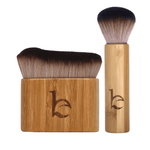
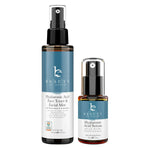






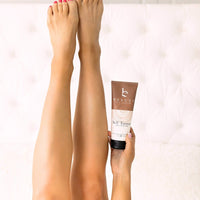








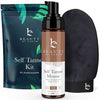

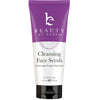


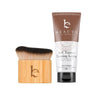









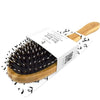
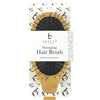
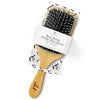

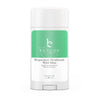



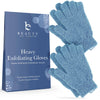
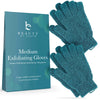
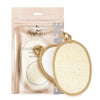
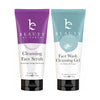










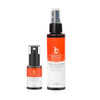




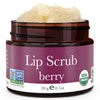
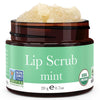
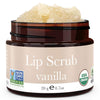





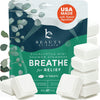
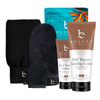
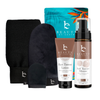














join the conversation
Do you still make the dry shampoo for blonde hair? I haven’t been able to find it in awhile.